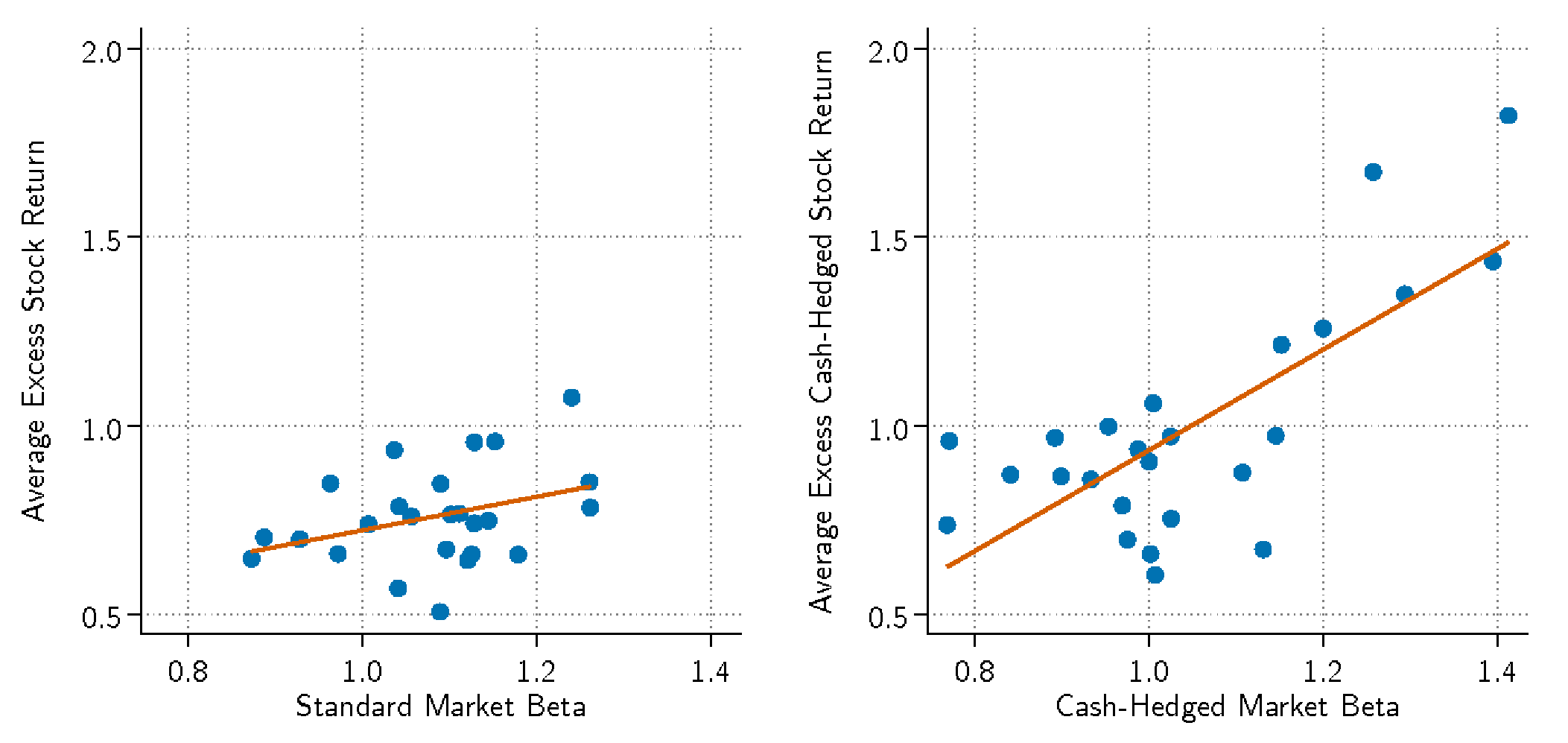Cash-Hedged Stock Returns
Published: June 28, 2022
This paper studies firms’ cash holdings and the implications for asset prices and financial stability. Corporate cash piles vary across companies and over time, and cash holdings are important for financial stability because of their value in crises. Firms’ cash holdings earn low returns that are correlated across firms. Thus, the asset pricing results are important both for investors who are managing a portfolio’s risk and policymakers concerned about sources of vulnerability. We show how investors can hedge out the cash on firms’ balance sheets when making portfolio choices. Cash generates variation in beta estimates, and we decompose stock betas into components that depend on the firm’s cash holding, return on cash, and cash-hedged return. Common asset pricing premia have large implicit cash positions, and portfolios of cash-hedged premia often have higher Sharpe ratios because of the correlation between firms’ cash returns. We show the value of a dollar increased in 2020, and firms hold cash because they are riskier. (Working Paper no. 22-03).
Abstract
Corporate cash piles vary across companies and overtime. A firm’s cash holding is an implicit position in a low-return asset that is correlated across firms. Cash generates variation in beta estimates. We show how investors can hedge out the cash on firms’ balance sheets when making portfolio choices. We decompose stock betas into components that depend on the firm’s cash holding, return on cash, and cash-hedged return. Common asset pricing premia—size, value, and momentum—have large implicit cash positions. Portfolios of cash-hedged premia often have higher Sharpe ratios because firms’ cash returns are correlated.
JEL Classifications: G12
Keywords: cross-section of expected returns, cash, riskfactor, size, value, momentum
